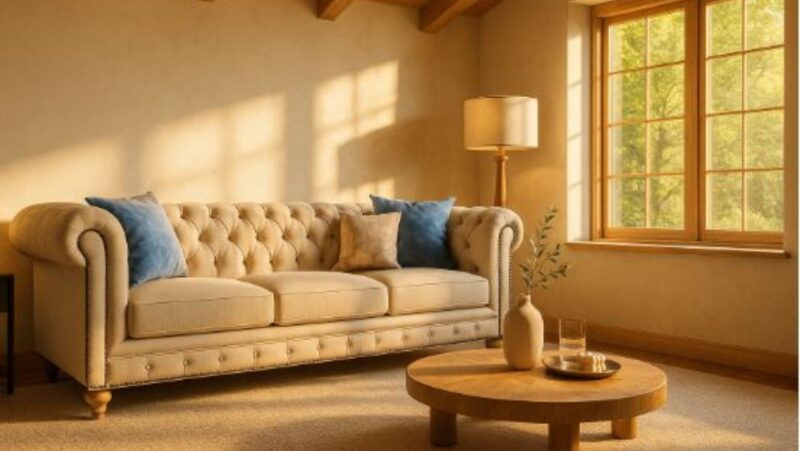
Water damage to wood floors can cause significant swelling and warping, creating an unsightly and potentially unsafe surface. Immediate and proper action, such as removing standing water and thoroughly drying the area, is crucial to mitigate the damage. Professional water removal and drying services can effectively address moisture issues, preventing further damage and mold growth.
Once dry, sanding and refinishing may be necessary to restore the floor’s appearance and structural integrity. Prompt attention to water damage ensures the longevity and beauty of your wood floors.
Signs of Water Damage on Wood Floor
Swelling and Warping
Boards may swell and lift at the edges when exposed to water, creating an uneven surface. This distortion can compromise both the aesthetics and safety of the flooring. Immediate drying and repairs are essential to prevent further damage and restore the floor’s smooth, level appearance.
Discoloration
Dark or white spots on wood are common signs of water damage. Dark spots usually indicate prolonged exposure to moisture, potentially leading to mold growth, while white spots often result from water penetrating the wood’s finish. Addressing these spots quickly can prevent further damage and maintain the wood’s integrity and appearance.
Mold Growth
Fuzzy or slimy patches on wood indicate prolonged moisture exposure and are often signs of mold or mildew growth. These patches can compromise the wood’s integrity and pose health risks. Prompt cleaning, drying, and disinfecting are essential to eliminate the mold and prevent further damage. Proper ventilation and moisture control can help prevent recurrence.
Cupping and Crowning
Boards may curve upwards at the edges, known as cupping, or in the center, known as crowning, due to uneven moisture exposure. This warping can create an uneven and potentially unsafe surface, requiring prompt drying and repairs to restore the flooring’s integrity.
Fixing Water Damaged Swollen Wood Floor
Drying the Floor
Stop the Source of Water: Identify and fix the source of water to prevent further damage. This could be a leaking pipe, a faulty appliance, or water intrusion from outside.
Remove Surface Water: Use mops, towels, or a wet vacuum to remove as much standing water as possible.
Ventilate the Area: Increase air circulation by opening windows and using fans. Dehumidifiers can also help to reduce moisture levels in the air.
Remove Wet Items: Remove rugs, furniture, and any other items that are on the floor to prevent further absorption of moisture.
Use a Moisture Meter: Check the moisture content of the wood periodically. Wood should have a moisture level of about 6-9% before starting any repairs.
Repairing the Damage
Sanding and refinishing can effectively address minor swelling and surface damage to wood floors. First, allow the wood to dry completely to ensure no moisture remains trapped within the boards. Once dry, sand the affected area to smooth out any warping or unevenness, starting with coarse-grit sandpaper and gradually moving to finer grits for a smooth finish.
After sanding, apply a matching stain to blend the repaired area with the rest of the floor. Finally, seal the sanded and stained area with a protective finish to guard against future water damage. This process restores the floor’s appearance and maintains its structural integrity.
Replacing Damaged Boards
For severe damage, replacing the affected boards may be necessary. First, identify and mark the damaged boards to ensure precise removal. Use a circular saw to carefully cut through the damaged boards, taking care not to harm adjacent boards.
Next, use a pry bar to remove the cut boards, clearing the area for the new ones. Install new boards of the same type and size, securing them in place with nails or glue. Finally, sand and finish the new boards to seamlessly blend with the rest of the floor, restoring both appearance and functionality.
Addressing Mold
If mold is present, addressing it promptly is crucial to prevent health issues and further damage. Start by wearing protective gear, such as gloves and a mask, to safeguard yourself from mold exposure. Clean the moldy area with a solution of water and mild detergent to remove surface mold. For stubborn mold, use a commercial mold remover as directed to ensure thorough cleaning.
After cleaning, dry the area completely to prevent mold from returning. Ensuring the area is thoroughly dry is essential to inhibit future mold growth and maintain a healthy environment.
Taking Professional Help to Fix Water Damaged Wood Floors
Taking professional help to fix water-damaged wood floors ensures thorough and effective restoration. Experts in water restoration services possess the necessary tools and expertise to properly dry, clean, and repair your floors, preventing further damage and mold growth. They can assess the extent of the damage and provide tailored solutions, from minor repairs to replacing severely damaged boards.
Additionally, professional water restoration services can assist with insurance claims, ensuring all necessary documentation is accurately completed. By entrusting your floors to professionals, you ensure a high-quality restoration that preserves both the aesthetics and structural integrity of your home.
Preventing Wood Floors from Water Damage
Seal the Wood
Applying a water-resistant sealant helps protect wood from future water damage by creating a barrier that prevents moisture penetration.
Improve Drainage
Ensure proper drainage around your home to prevent water from seeping into the flooring, reducing the risk of water damage.
Use Area Rugs
Place area rugs in high-risk areas, such as under sinks and near entryways, to absorb excess moisture and protect the wood floors.
FAQs
How can I fix swollen wood floors due to water damage?
Begin by removing any standing water and allowing the wood to dry completely. Then, sand the affected area to smooth out any warping, and finish with a matching stain and protective sealant.
Is it necessary to replace water-damaged wood floors?
Replacement is necessary if the damage is severe. For minor swelling, sanding and refinishing may suffice, but for extensive damage, you should replace the affected boards.
Can I repair water-damaged wood floors myself?
Minor repairs, such as drying and sanding, can be done yourself. However, for extensive damage or to ensure thorough restoration, it’s best to consult professional water restoration services.
How long does it take for water-damaged wood to dry completely?
The drying time can vary, but it generally takes several days to a few weeks, depending on the extent of the damage and the drying conditions.
What should I do if mold is present on water-damaged wood floors?
Wear protective gear, clean the area with a solution of water and mild detergent, and use a commercial mold remover if necessary. Ensure the area is thoroughly dried afterward.
Conclusion
Fixing swollen water-damaged wood floors quickly is essential to maintain their appearance and structural integrity. Minor damages can often be addressed with drying, sanding, and refinishing, while severe damage may require board replacement. Consulting professional water restoration services ensures a thorough and effective restoration, preventing future issues like mold growth.
Regular maintenance and preventive measures, such as using water-resistant sealants and improving home drainage, can help protect your wood floors from future water damage. Taking these steps will ensure your floors remain beautiful and durable for years to come.














